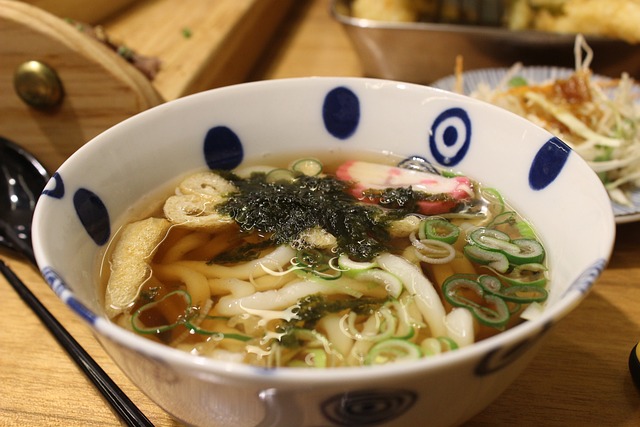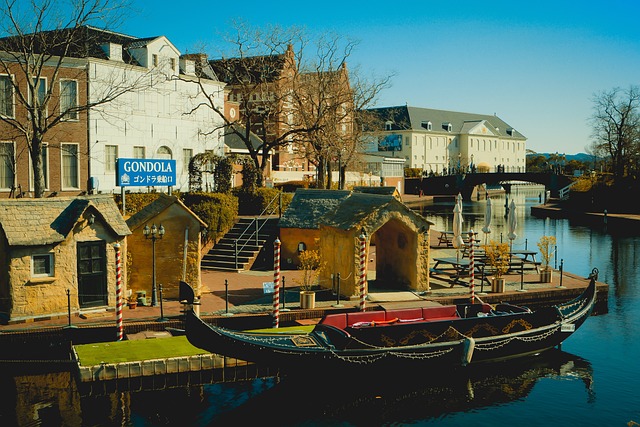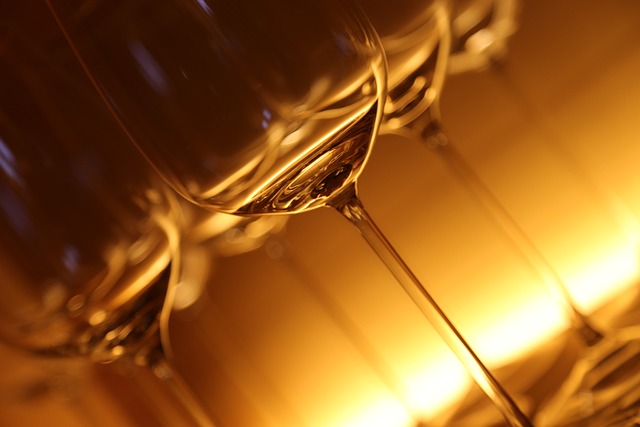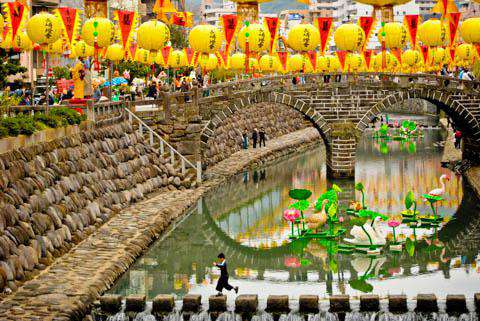Nagasaki is an authentic city known for its history, hot spring spas, and local cuisine. In this travel cost guide, we'll cover everything you need to know to plan your travel budget and have an amazing trip without spending too much. This guide includes average trip costs from previous travelers, typical hotel prices, food and dining costs, entertainment and sightseeing prices, and information about transportation. This will help you plan the best trip to Nagasaki and stay within your ideal travel budget, whether you're exploring the museums, eating the delicious cuisine, or enjoying the nightlife.
How much does it cost to travel to Nagasaki?
A typical traveler spends $114 (¥16,834) per day on a trip to Nagasaki. This is the average daily price for a vacation in Nagasaki based on the expenses of other visitors.
Past travelers have spent, on average for one day:
- $50 (¥7,367) on meals
- $19 (¥2,737) on local transportation
- $98 (¥14,463) on hotels
A one-week trip to Nagasaki for two people costs, on average, $1,593 (¥235,676). This includes accommodation, food, local transportation, and sightseeing.
All of these average travel prices have been collected from other travelers to help you plan your own travel budget.
-
One Week
Per person
$797
¥117,838
-
2 Weeks
Per person
$1,593
¥235,676
-
One Month
Per person
$3,414
¥505,020
-
One Week
For a couple
$1,593
¥235,676
-
2 Weeks
For a couple
$3,186
¥471,352
-
One Month
For a couple
$6,828
¥1,010,040
How much does a one week, two week, or one month trip to Nagasaki cost?
A one week trip to Nagasaki usually costs around $797 (¥117,838) for one person and $1,593 (¥235,676) for two people. This includes accommodation, food, local transportation, and sightseeing.
A two week trip to Nagasaki on average costs around $1,593 (¥235,676) for one person and $3,186 (¥471,352) for two people. This cost includes accommodation, food, local transportation, and sightseeing.
Please note, prices can vary based on your travel style, speed, and other variables. If you're traveling as a family of three or four people, the price per person often goes down because kid's tickets are cheaper and hotel rooms can be shared. If you travel slower over a longer period of time then your daily budget will also go down. Two people traveling together for one month in Nagasaki will often have a lower daily budget per person than one person traveling alone for one week.
A one month trip to Nagasaki on average costs around $3,414 (¥505,020) for one person and $6,828 (¥1,010,040) for two people. The more places you visit, the higher the daily price will become due to increased transportation costs.
Is Nagasaki expensive to visit?
In Nagasaki, budget travelers spend $49 (¥7,148) per day on average, mid-range travelers spend $114 (¥16,834) per day, and luxury travelers spend around $240 (¥35,333) per day. These costs are calculated from the reported expenses of previous travelers to Nagasaki.
Nagasaki is a great city that brings in a diverse crowd of visitors, each with unique travel styles and spending behaviors. Visitors can find a range of options for accommodation from high-end luxury hotels to mid-range places to budget-friendly hostels.
While Nagasaki can be quite expensive if you let it be, there are ways to lower your spending, such as eating at less expensive restaurants and taking public transit.
Within Asia, Nagasaki is a moderately priced destination compared to other places. The overall cost of travel here is fair for the region and comparable to Nagoya or Wuhu.
For more details, and to find out if it's within your travel budget, see Is Nagasaki Expensive?
How much money do I need for a trip to Nagasaki?
The average Nagasaki trip cost is broken down by category here for independent travelers. All of these Nagasaki travel prices are calculated from the budgets of real travelers. Also, you can see more details at How much does a trip to Nagasaki cost?
Nagasaki on a Budget
|
Category
|
Budget
|
Mid-Range
|
Luxury
|
Accommodation1
For 1 person in double occupancy
|
$21
(¥3,054)
|
$49
(¥7,231)
|
$104
(¥15,418)
|
|
Local Transportation1
|
$8
(¥1,213)
|
$19
(¥2,737)
|
$34
(¥5,004)
|
|
Food2
|
$21
(¥3,118)
|
$50
(¥7,367)
|
$106
(¥15,609)
|
|
Entertainment1
|
$10
(¥1,478)
|
$23
(¥3,471)
|
$49
(¥7,220)
|
|
Alcohol2
|
$2-7
(¥353-1,058)
|
$6-17
(¥816-2,448)
|
$11-33
(¥1,624-4,872)
|
Realistic Expectations for Your Travel Budget
Having realistic expectations for your travel expenses is important. While many assume they can visit Nagasaki on a tight budget, the truth is that most people don't enjoy traveling that way. Think about what you prioritize on vacation. Do you prefer staying in resorts or hostels? Do you love exploring sights and attractions, or dining out? Your preferences will directly impact your budget and travel plans.
The Truth on Budget Travel
You might think you're a budget traveler, but unless you're willing to sacrifice many comforts, expect to spend a lot more than the average of $49 per day that backpackers typically manage.
Younger budget travelers sometimes stick to a shoestring budget, which usually means staying in hostel dorms, eating at budget restaurants or fast food, relying on public transportation or walking, and limiting activities to free attractions.
Thankfully, Nagasaki is home to plenty of hostels, including Hostel Casa Noda, Casa Blanca Guesthouse, and HafH Nagasaki SAI. In these hostels, you can find economical dorm accommodations and a fun social atmosphere, but amenities are typically limited. The city also includes a reliable public transportation system that helps budget travelers avoid overspending on taxis or rideshare services. Food is a major draw for all kinds of visitors to Nagasaki, but budget travelers frequently rely on street food or prepare their own meals in hostels, which means they might miss out on the amazing local cuisine.
Do You Identify as an Average Traveler?
If you're a family or couple enjoying a vacation, you'll probably want to stay in a mid-range hotel, eat at well-liked restaurants, and check out significant museums and attractions that charge entry fees. Most travelers to Nagasaki will be eager to explore the key attractions, museums, sights, and landmarks. Most activities aren't free. So, you should realistically expect your daily budget to be around $114 per person, per day.
The range of hotels and vacation rentals in Nagasaki is impressive. If you're traveling with others, sharing your hotel with a partner, friend, or kids allows you to split the costs and save money. Families will want to find hotels and restaurants that accommodate children. Hotel Forza Nagasaki is a solid choice for families, while Hotel Monterey Nagasaki also offers great options. For additional family and couple-friendly hotels, refer to our hotel guide for Nagasaki here.
Looking to Travel in Luxury?
For a trip that encompasses every convenience with outstanding service, get ready for a daily cost nearing $240. To experience nicer hotels, enjoy award-winning cuisine, indulge in extravagant outings, and use taxis or private drivers for your journeys in the city, be prepared for premium pricing. Many luxury travelers also enjoy unique experiences such as Nagasaki Half-Day Private Tour with Government-Licensed Guide - offered by Viator.
Accommodation Budget in Nagasaki
Hotel prices in Nagasaki can vary significantly. Some hotels charge much higher rates but also offer more luxury and better amenities. During peak season, these prices rise even more. In the off-season, the average room costs around $81, while in peak summer season it jumps to an average of $151. Budget accommodations range from $47 to $347, but hostels are usually cheaper, especially in dorm rooms. Save money by traveling during the low or shoulder seasons, or by booking in advance and watching for deals.
Calculated from travelers like you
The average price paid in Nagasaki for two people for a typical double-occupancy hotel room is $98 (¥14,463). For one person sharing a room, the average price paid for a hotel room is $49 (¥7,231) per night. These costs are from the reported spending of actual travelers.
Looking for a hotel in Nagasaki? Prices vary by location, date, season, and the level of luxury. See below for options.
The most affordable highest rated hotels in Nagasaki include:
- i+Land nagasaki starting at $102
- Luke Plaza Hotel starting at $77
- Hotel Forza Nagasaki starting at $67
- JR Kyushu Hotel Nagasaki starting at $59
Nagasaki's great public transit offers the flexibility to stay farther from the city, but be mindful that your transportation costs may increase, and it could be a time drain.
Visiting in the low or shoulder season, rather than during summer, will give you cheaper lodging options and fewer tourists to navigate around.
Transportation Budget in Nagasaki
Nagasaki is known for its efficient public transit system. The city has four tram lines as well as city buses. Save time and money by using public transportation, with taxis and rideshares available if you need them.
Nagasaki is quite walkable in certain areas, making it easier to explore various sights. Many parts of the city can be explored by foot. The downtown is about a kilometer from Nagasaki Station and the Peace Park is several kilometers in the other direction from the station.
Public Transit: 



 (great)
(great)
Walkability: 



 (good)
(good)
Calculated from travelers like you
-
On average, past travelers have spent $19 (¥2,737) per person, per day, on local transportation in Nagasaki. The cost of a taxi ride or rideshare service (Uber/Lyft) in Nagasaki is significantly more than public transportation.
-
Transportation1
Taxis, local buses, subway, etc.
$19
¥2,737
Nagasaki Airport is about an hour north of the city on an island in Omura bay, served by both of Japan's major air carriers. Japan Airlines and All Nippon Airways offer nonstop flights from Haneda Airport in Tokyo and Osaka's Itami Airport. Connections to Tokyo, Osaka, Kagoshima, Okinawa, and other destinations can be made here.
By train from Nagasaki Station there are JR trains to Hakata Station in Fukuoka for Shinkansen connections to Yamaguchi, Hiroshima and Osaka, Kumamoto and trains to Oita. Nagasaki Station also serves local JR trains going to Isahaya, Omura, Huis Ten Bosch, Haiki and Sasebo as well as Kikitsu, Hizen-Yamaguchi, Saga, and Tosu. There are also sleeper trains available overnight from Tokyo to Nagasaki.
By bus, highway buses from Hakata station and the Fukuoka airport international terminal are the most economical way to reach Nagasaki from Fukuoka.
Inside the city, most of Nagasaki is well-connected by trams and local buses.
In Japan, trains are one of the fastest and lowest cost means of transportation. Getting a Japan Rail Pass can save you money if you plan to stay for several days or more. Regional and nation-wide passes are available, usually for the number of days of your choice.
A few of the typical transportation options and hotel transfers include:
- Private Transfer from Nagasaki Airport (NGS) to Nagasaki Port for $117 details
- Nagasaki City to Nagasaki International Airport Private Departure Transfer for $196 details
- Nagasaki International Airport to Nagasaki City Private Arrival Transfer for $196 details
How much does it cost to go to Nagasaki? Naturally, it depends on the dates. We recommend Kayak because they can find the best deals across all airlines.
The price of renting a car in Nagasaki will depends on dates, the type of car, the location, and your age. We recommend Kayak because they can find the best deals across all car rental companies.
Food Budget in Nagasaki
You'll find that the food in Nagasaki is wonderful. Be sure to spend time enjoying all the local flavors. The city has a cosmopolitan cuisine which has been influenced by China and several Western cuisines. Popular local dishes include Chanpon (a noodle dish), Sara Udon (meat, vegetables, and noodles), and Kakuni Manju (pork belly on a dough bun).
Calculated from travelers like you
-
While restaurant and meal prices in Nagasaki can vary significantly, the average cost of food in Nagasaki is $50 (¥7,367) per day, per person, based on the spending habits of previous travelers.
-
Food2
Meals for one day
$50
¥7,367
When dining out, the average daily cost for food in Nagasaki is around $50 (¥7367) per person, with previous travelers spending from $21 to $106. Generally, breakfast and lunch cost less than dinner, but this will depend on the type of restaurant and what you order.
Typical meal prices in Nagasaki are as follows:
- Breakfast: $5 to $15
- Lunch: $8 to $20
- Dinner: $15 to $35
- Coffee: $4
- Fast Food or Street Food: $8
Nagasaki is very well known for a seafood dish called champon. This regional cuisine consists of a hearty dish of noodles in a pork-based broth, filled with vegetables, bacon, shrimp, squid, and scallops. Sara udon is another popular dish that combines the meat, seafood, vegetables, and sauce of champon, but serves it on a plate, or "sara," over crispy dry fried noodles. When looking for some of the best local eats, Chinatown is the top neighborhood. Not only can you enjoy good eats at Nagasaki's best champon and sara udon restaurants, but you can also sample some of the city's fantastic street food. Some of these quick bites include a marinated braised pork cutlet served in a steamed bun called kakuni-manju, shrimp fried in chili sauce and served in a steamed bun called ebichiriman, and a steamed pound cake called marakao usually available in chocolate and chestnut flavors.

Many hotels include breakfast in their pricing structure, while some charge additional fees for it. The quality and cost can vary significantly by hotel. Knowing this in advance can help you decide whether to allocate more money. It might be worth paying for the delicious hotel buffet, or you could go to a local bakery or cafe that's less expensive.
Pack a water bottle to avoid buying drinks on the go. Plus, it's beneficial for the planet.
While planning your tour, it's essential to know which meals are included. You may find yourself paying for some meals, which can add to your travel budget.
If you're looking to experience the culinary culture in Nagasaki, taking a food tour or cooking class is a terrific way to do it. After all, cuisine is one of the reasons why so many people visit. Some of the best food-related activities here include:
- Cooking with a Local Okaasan at Kominka in Ojika Island Nagasaki for $41 details
- Sunset Beach Dinner for $53 details
Sightseeing and Activities Budget in Nagasaki
Tourists can't resist Nagasaki, especially for its well-known museums and attractions, food, nightlife, and family-friendly activities.
Calculated from travelers like you
-
Sightseeing activities, entertainment, and entrance tickets in Nagasaki typically cost an average of $23 (¥3,471) per person, per day based on the spending of previous travelers. This includes fees paid for admission tickets to museums and attractions, day tours, and other sightseeing expenses.
-
Entertainment1
Entrance tickets, shows, etc.
$23
¥3,471
If you are looking to pay homage to the horrible nuclear decision of WWII, the Atomic Bomb Museum presents commemoration of one of the greatest tragedies of the 20th century. Its exhibits argue powerfully against nuclear warfare and the outdoor Peace Park acts as a reminder of international friendship with statues donated from countries worldwide.
Overlooking the city, Mount Inasa offers 360-degree views of Nagasaki and its harbor. The nighttime view of the city is one of the best in the country and can most easily be reached by car or taxi. Some other top attractions of the city itself include Glover Garden with a historic collection of European style homes built for foreign trader and diplomats in the mid-19th century, Koshibyo Confucius Shrine-the only one built outside of China with a rich Chinese history museum, the Oura Cathedral, the Urakami Cathedral, the site of the former Dutch factory called Dejima, and many museums celebrating Japanese history and culture. The Nagasaki Penguin Aquarium is also worth a visit, which features a variety of penguins as well as some local fish and invertebrates.
As far as activities go, one could spend a day exploring Gunkanjima, translated "Battleship Island." Abandoned since 1974, the island is covered with the ruins of a mining city, a ghost town of what the society left behind. Gunkanjima is about 15 km away from Nagasaki and is reachable by a ferry with tours of the island available.
Chinatown is, of course, a must during a stay in Nagasaki. Full of vibrant colors, sizzling smells, and the sounds of bustling streets, this is a place of culture to get lost in. As mentioned earlier, the Lantern Festival, which occurs mid-Jan to mid-Feb for the Chinese New Year, is the most popular time to visit. During the festival 20,000+ lanterns are displayed throughout the city, featuring shapes of animals and figures from Chinese mythology. Speaking of festivals, one of Nagasaki's biggest is called O-Kunchi. It is a celebration of their patron, with festivities featuring choreographed routines with giant floats, good food, sake, and a general feeling of celebration.
Museums and Attractions:
 Nagasaki is well-known for its iconic museums and renowned landmarks. Nagasaki Peace Park is a moving tribute to those lost during the atomic bomb attack. Other sights around town include the Nagasaki Shinchi Chinatown, Kofukuji Temple, and Huis Ten Bosch.
Nagasaki is well-known for its iconic museums and renowned landmarks. Nagasaki Peace Park is a moving tribute to those lost during the atomic bomb attack. Other sights around town include the Nagasaki Shinchi Chinatown, Kofukuji Temple, and Huis Ten Bosch.
Local tours that last a few hours can be a great way to explore Nagasaki. Prices vary by the type of activity or tour, the dates, and the size of the group. Here are a few of the highest rated tours by previous visitors:
- Nagasaki Street Food Adventure: Private Walking Tour with a Local for $224 details
- Traditional Kimono Experience in Nagasaki for $55 details
- Nagasaki Private Customizable Half Day Tour for $215 details
Nightlife Budget in Nagasaki
Visitors to Nagasaki find the nightlife exhilarating, enjoying nights filled with fun at the local bars, clubs, and parties. The best areas for nightlife are the Doza-machi and Shianbashi districts. Shinanbashi is filled with narrow alleys and its easy to get lost.
Calculated from travelers like you
-
The average person spends about $11 (¥1,632) on nightlife and alcoholic beverages in Nagasaki per day. The more you spend on alcohol, the more fun you might be having despite your higher budget.
-
Alcohol2
Drinks for one day
$11
¥1,632

Nights out are fun, but limiting your alcohol consumption can help keep your travel costs in check.
While enjoying a night out, remember to stay alert. If you're drinking, you might become an easy target for thieves, so it's best to stay with friends you trust.
Travel cost data last updated: Aug 14, 2025
Traveling in Nagasaki
 Nagasaki, Japan (©Sue Ann Simon/©JNTO)
Nagasaki, Japan (©Sue Ann Simon/©JNTO)
Set in a natural harbor on the northwest coast of Japan, Nagasaki is a Japanese city synonymous with a key moment during WWII after suffering an Allied nuclear attack in 1945. While the event is memorialized at the city's Atomic Bomb Museum and Peace Park, the city in no way is defined by the event. Today it exists as a culturally and religiously diverse port town with a certain charm amongst the terraces of surrounding hills.
Neighborhoods & Around
Nagasaki Chinatown, also known as Shinchi Chinatown, is Japan's oldest Chinatown, forming during the 15th to 19thcenturies. As it was once the only port in the country open to Chinese trade, this Nagasaki neighborhood began to adopt a Chinese flair unlike any other of Japan's cities. Trade goods included silk, sugar, medicines and books, and the Chinese culture began to have a great influence on the people of Nagasaki. Today Nagasaki's Chinatown is best known for its restaurants, street food, and their two famous noodle dishes: champon and sara udon. Restaurants typically open between 11:00 and 15:00 (11am-3pm) for lunch and from 17:00 to 21:00 (5pm-9pm) for dinner. This area is one of the city's top attractions for tourists, especially during the Nagasaki Lantern Festival, the largest Chinese New Year celebration in Japan.
Related:
Looking for a hostel in Japan? In search of a party in Tokyo? Traveling alone to Osaka or Tokyo?
We've been gathering travel costs from tens of thousands of actual travelers since 2010, and we use the data to calculate average daily travel costs for destinations around the world. We also systematically analyze the prices of hotels, hostels, and tours from travel providers such as Kayak, HostelWorld, TourRadar, Viator, and others. This combination of expenses from actual travelers, combined with pricing data from major travel companies, gives us a uniqe insight into the overall cost of travel for thousands of cities in countries around the world. You can see more here: How it Works.
 Nagasaki, Japan (©Sue Ann Simon/©JNTO)
Nagasaki, Japan (©Sue Ann Simon/©JNTO)


 Nagasaki is well-known for its iconic museums and renowned landmarks. Nagasaki Peace Park is a moving tribute to those lost during the atomic bomb attack. Other sights around town include the Nagasaki Shinchi Chinatown, Kofukuji Temple, and Huis Ten Bosch.
Nagasaki is well-known for its iconic museums and renowned landmarks. Nagasaki Peace Park is a moving tribute to those lost during the atomic bomb attack. Other sights around town include the Nagasaki Shinchi Chinatown, Kofukuji Temple, and Huis Ten Bosch.
 Budget Your Trip is all about finding out how much everything costs so that you can travel cheaper and longer. Created by avid travelers Laurie and Bryan, our goal is to help you plan your next trip on the right budget. With average daily travel costs that are calculated from the budgets of real travelers, plus an analysis of hotel and tour prices, you can find out how much money you need to plan your next adventure. We also have plenty of travel advice, accommodation reviews, and activity suggestions.
Budget Your Trip is all about finding out how much everything costs so that you can travel cheaper and longer. Created by avid travelers Laurie and Bryan, our goal is to help you plan your next trip on the right budget. With average daily travel costs that are calculated from the budgets of real travelers, plus an analysis of hotel and tour prices, you can find out how much money you need to plan your next adventure. We also have plenty of travel advice, accommodation reviews, and activity suggestions.